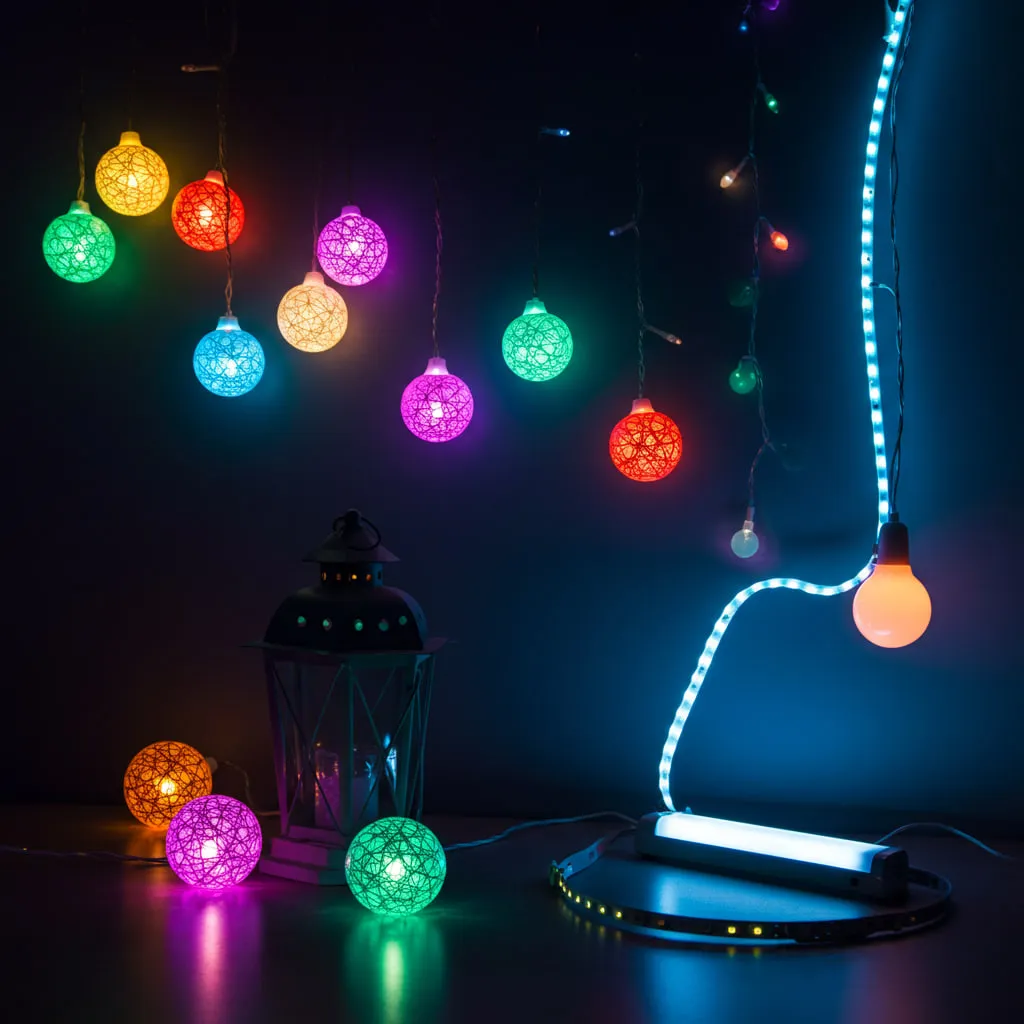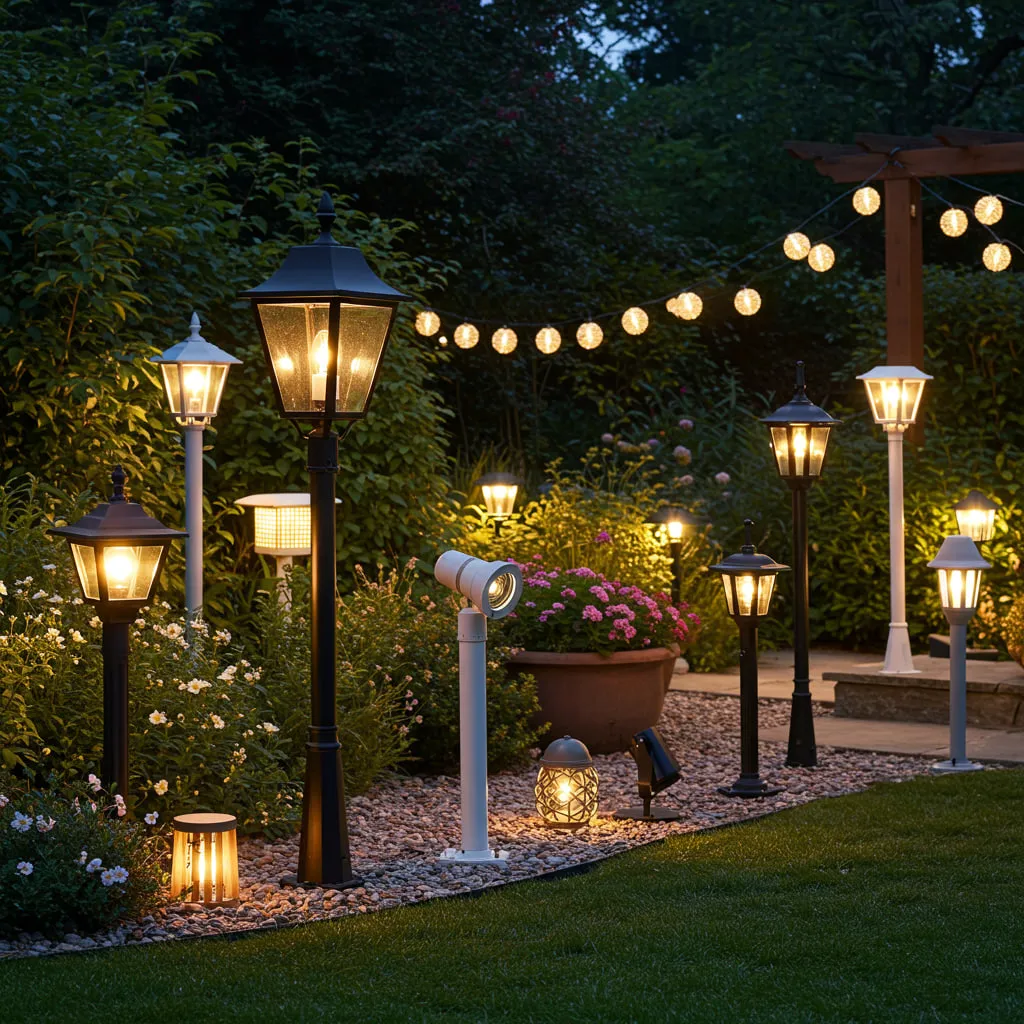What is smart lighting?
Smart lighting in a smart home goes far beyond simply turning lights on and off. It's about creating personalized and automated lighting experiences.
Lighting
Input your text here! The text element is intended for longform copy that could potentially include multiple paragraphs.

Remote Control
Users can control lights from anywhere using smartphones or tablets. This offers convenience and peace of mind, especially when away from home.
Automation and Scheduling
Lights can be programmed to turn on or off at specific times or based on events. This can mimic occupancy for security or create automated lighting scenes.
Dimming and Color Control
Smart bulbs allow for precise control of brightness and color temperature. This enables the creation of ambiance for different activities or moods.
Motion Activation
Motion sensors can trigger lights to turn on when someone enters a room. This is useful for hallways, closets, or outdoor security lighting.
Voice Control Integration
Smart lights can be controlled using voice commands through assistants like Alexa, Google Assistant, and Siri. This allows for hands-free operation.
Energy Efficiency
Smart lighting can help reduce energy consumption through scheduling and dimming. Many smart bulbs are LED, which are inherently more energy-efficient.
Scene Creation
Users can create custom lighting scenes for different activities, such as movie nights, dinner parties, or relaxing. These scenes can involve multiple lights with varying brightness and color settings, activated with a single command.
Integration with other smart home devices
Smart lights can be integrated with other smart home devices, like security systems, to create automated responses to events. For example, lights could turn on when a security camera detects motion.
Ambient
Ambient smart home lighting elevates traditional lighting by providing personalized, automated, and energy-efficient illumination that enhances both comfort and well-being.

Creating Atmosphere
Ambient lighting aims to provide general, soft illumination, setting the overall mood of a room. Smart technology allows for dynamic adjustments to brightness and color temperature, tailoring the atmosphere to specific activities or times of day.
Dynamic Adjustment
Smart ambient lighting systems can automatically adjust based on factors like:
- Time of day (e.g., warmer tones in the evening).
- Occupancy (e.g., adjusting when someone enters or leaves a room).
- Natural daylight levels (e.g., dimming or brightening to complement available sunlight).
Enhanced Well-being
By controlling lighting temperature and intensity, smart ambient lighting can influence mood, productivity, and sleep patterns. Automation minimizes the need for manual adjustments, creating a seamless and comfortable environment.
Energy Efficiency
Smart ambient lighting systems optimize energy consumption by adjusting brightness and turning lights off when not needed. Integration with sensors and other smart home devices further enhances energy efficiency.
Smart Integration
These systems can be integrated with voice assistants and smart home platforms for convenient control. Users can create customized lighting scenes for various activities, such as relaxation, work, or entertainment.
Key technologies
The use of technologies like LED light strips, and smart bulbs, that allow for a broad range of color and brightness control. The integration of sensors, that allow the lights to react to the enviroment. The use of smart hubs, and applications that allow for control of the lighting systems.
Accent
Accent smart home lighting transforms ordinary spaces into visually stunning environments by strategically highlighting key features and creating dramatic lighting effects.

Highlighting Focal Points
Accent lighting draws attention to artwork, architectural details, decorative elements, or specific areas of a room. It creates visual contrast and adds a layer of sophistication to the overall design.
Creating Dramatic Effects
By strategically positioning and controlling light, accent lighting can create dramatic shadows and highlights. This can enhance the mood and atmosphere of a space, adding a sense of depth and dimension.
Layering Light
Accent lighting works in conjunction with ambient and task lighting to create a well-balanced and visually appealing lighting scheme. Layering light adds depth and complexity to a room, making it more comfortable and inviting.
Smart Control and Customization
Smart accent lighting systems offer precise control over brightness, color, and direction. Users can create customized lighting scenes to highlight different features or create specific moods.
Flexibility and Versatility
Smart accent lighting can be easily adjusted to suit different occasions or preferences. This flexibility allows users to transform the look and feel of a space with minimal effort.
Common technologies
LED strip lighting, that can be placed in many locations for highlighting. Spot lighting, that can be directed at specific objects. Smart bulbs, that are placed in lamps, and other fixtures, that can have their color and brightness changed. Smart plugs, that allow for control of existing accent lighting fixtures.
Decorative
Decorative smart home lighting blends functionality with artistic expression, transforming ordinary light fixtures into eye-catching design elements that enhance the beauty and atmosphere of a living space.

Aesthetic Enhancement
Decorative lighting serves as both a light source and a design element, enhancing the overall visual appeal of a room. It can add a touch of elegance, whimsy, or modernity, depending on the style.
Personalization and Style
Smart decorative lighting offers a wide range of styles, colors, and designs, allowing homeowners to express their personal taste. It can be used to create a unique and personalized atmosphere.
Enhanced Well-being
By controlling lighting temperature and intensity, smart ambient lighting can influence mood, productivity, and sleep patterns. Automation minimizes the need for manual adjustments, creating a seamless and comfortable environment.
Mood Setting
Smart decorative lights often offer adjustable brightness and color options, enabling users to create different moods and atmospheres. This can be useful for setting the ambiance for special occasions or everyday relaxation.
Smart Features
Integration with smart home systems allows for convenient control via smartphones, voice assistants, or automated schedules. This adds a layer of functionality to decorative lighting, making it both beautiful and practical.
Variety of Forms
Decorative smart lighting encompasses a wide range of forms, including:
- Smart chandeliers and pendant lights.
- Smart table and floor lamps.
- Smart LED strips for accentuating architectural features.
- Smart novelty lights, such as color-changing bulbs or themed fixtures.
Integration with home design
Decorative lighting is designed to integrate into the overall design of the home. The lights them selves become part of the design, and not just a light source.
Outdoor
Outdoor smart home lighting extends the benefits of smart lighting beyond the interior, enhancing security, ambiance, and convenience in outdoor spaces.

Enhanced Security
Motion-activated lights deter intruders and illuminate pathways. Scheduled lighting simulates occupancy, even when away from home. Smart security cameras often integrate with outdoor lighting for comprehensive surveillance.
Improved Safety
Illuminated pathways and steps prevent accidents and falls. Remote control allows for turning on lights before entering dark areas.
Ambiance and Entertainment
Color-changing lights and customizable scenes create a festive or relaxing atmosphere for outdoor gatherings. Smart landscape lighting highlights architectural features and gardens.
Convenience and Automation
Scheduled lighting automates outdoor illumination based on time of day or sunset/sunrise. Voice control allows for hands-free operation of outdoor lights. Integration with other smart devices, like irrigation systems, or weather stations, allows for automated responses to environmental conditions.
Energy Efficiency
Smart outdoor lighting systems often use LED technology, which consumes less energy. Motion sensors and timers prevent lights from staying on unnecessarily.
Weather Resistance
Outdoor smart lights are designed to withstand various weather conditions, including rain, snow, and extreme temperatures. Durability is a key factor in these systems.
